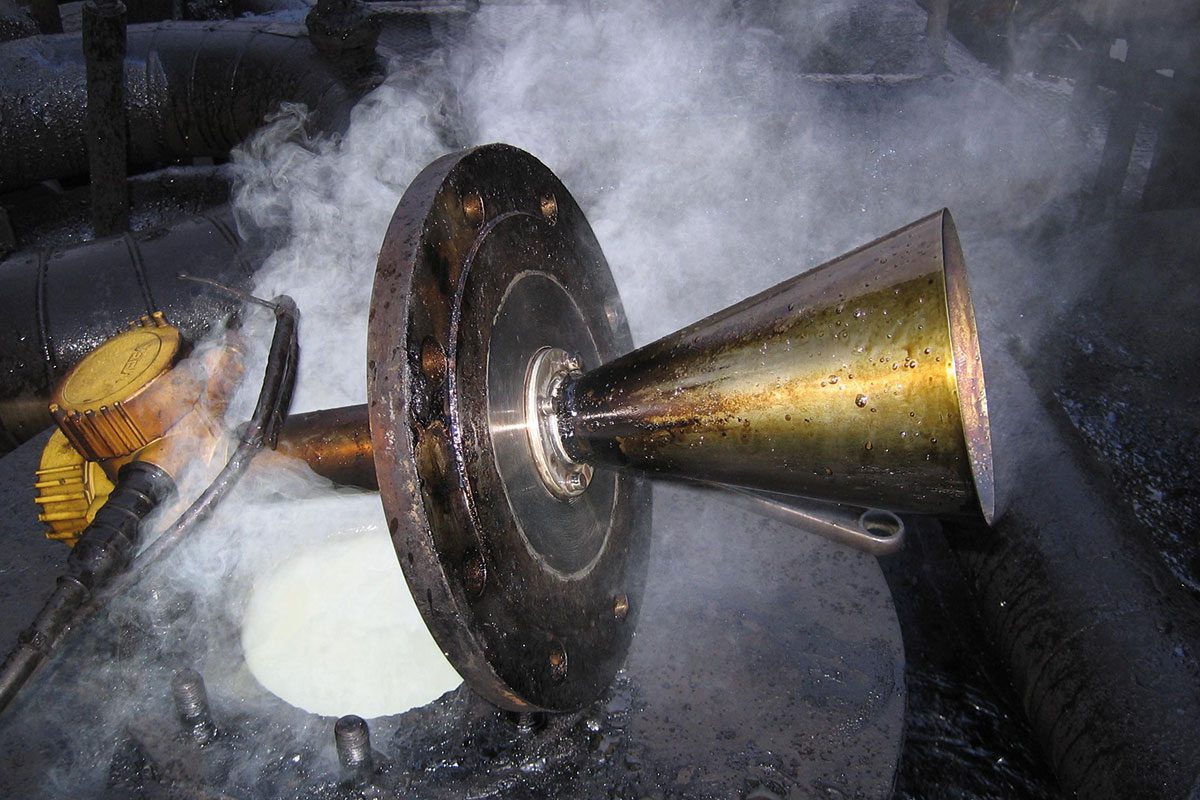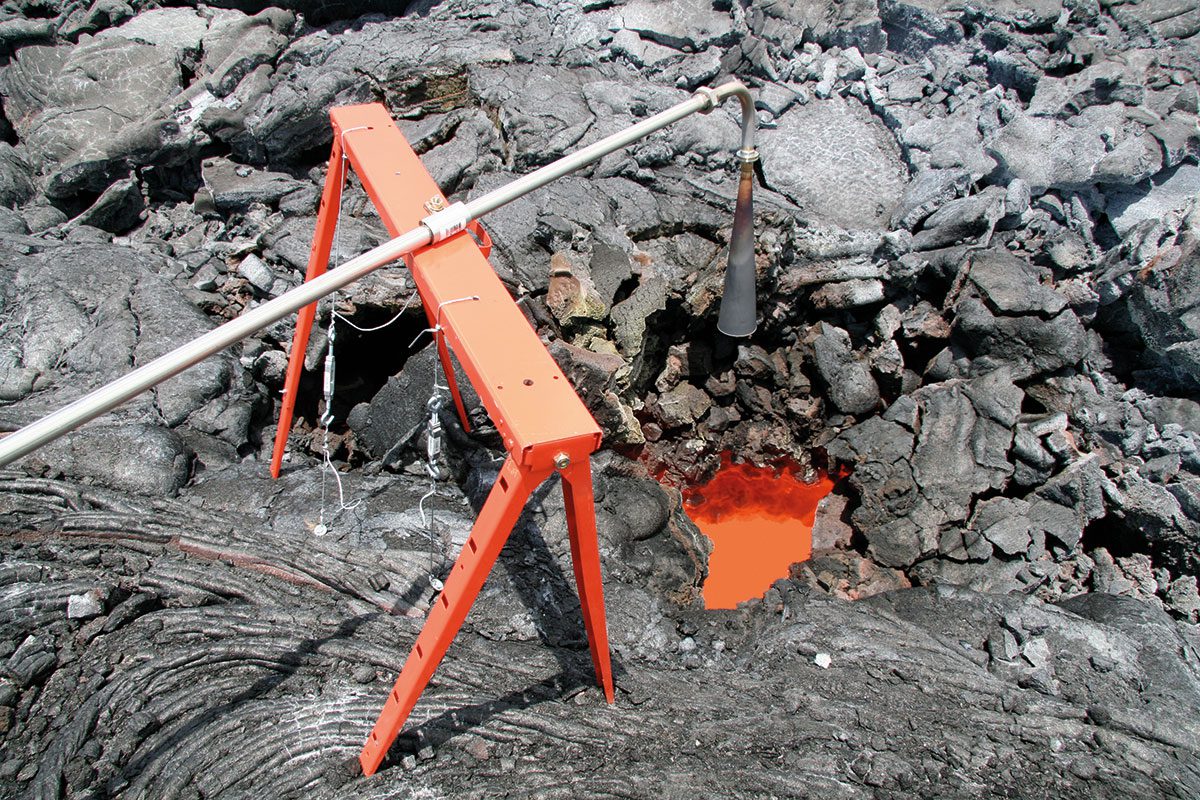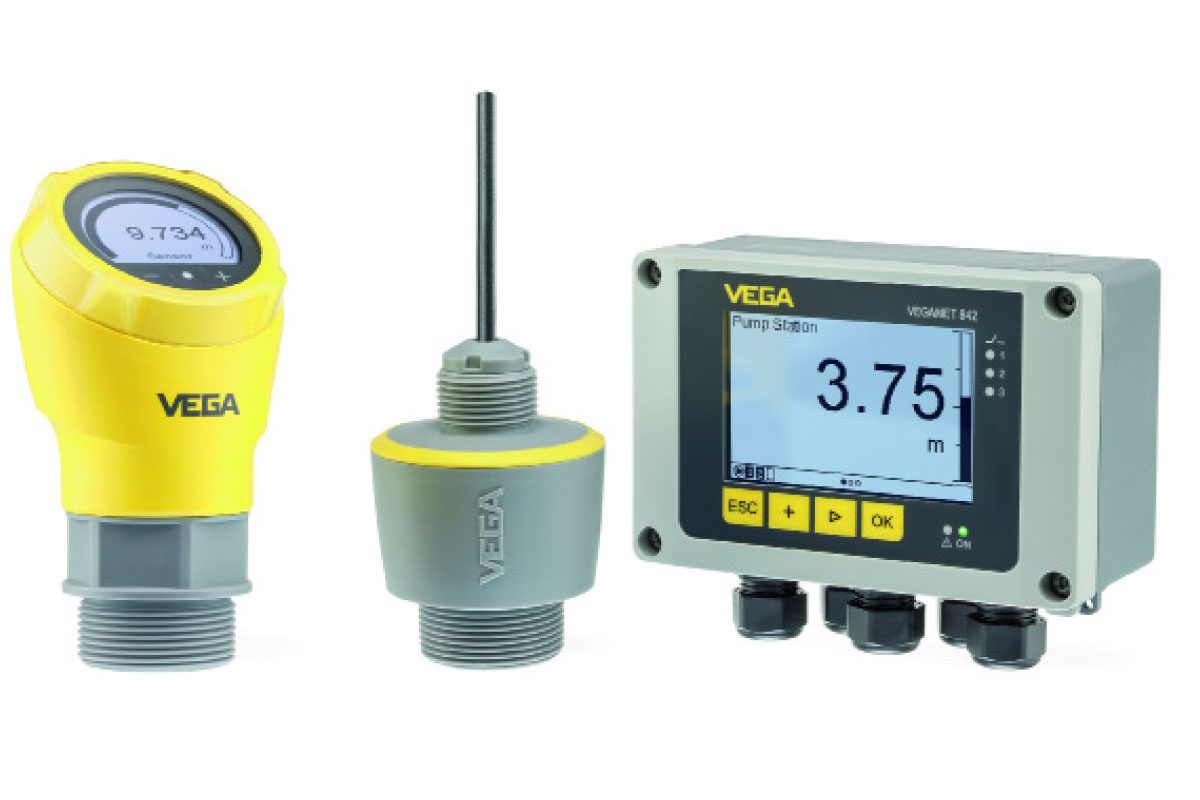In recent decades, non-contact level measurement technologies based on ultrasonic or radar-based ranging have become an indispensable means of measuring the quantities of liquids or solids remaining in containers like tanks, silos and IBCs, as well as controlling pumps and monitoring water and flood levels.

Traditionally, ultrasonic sensors have been the more affordable and widely used non-contact technology. But radar offers many performance advantages, although cost and complexity has restricted its use. All that could be changing now, says VEGA Controls, with the release this month of a range of 80GHz radar-based sensors, at a price point that seems more amenable to the cost constraints of sectors like water, wastewater and environmental monitoring. Envirotec asked the firm about level measurement and milestones in the technology’s development
Ultrasonic sensors are the more established technology in level measurement, having been used for around 45 years, and they are a widespread fixture in the environmental sphere. Both ultrasonic and radar technologies use a form of time-of-flight ranging – directing a signal at the surface of the material residing in the container, and measuring how long it takes to bounce back.
While it is more affordable, ultrasonic level measurement can be subject to accuracy problems, when conditions are challenging. The behaviour of sound waves is affected by temperature gradients within a container, for instance, and changes in the speed of sound can cause errors in the ranging measurement.
Such sensors also employ a tiny diaphragm which effectively “punches” the air to transmit the sound wave, and this transducer can dilate, for instance, when temperature rises – again, leading to sensor accuracy drift or weaker echo transmission and loss-of-echo problems.
Radar reach
The immunity of radio waves and microwaves to these kinds of temperature effects means radar sensors can measure levels of molten steel just as easily as those of water, says Doug Anderson of VEGA Controls. Radar also has the distinction of being immune to material build-up on the surface of the sensor, something the firm has demonstrated in the past with the use of chocolate spread, grease, water sprays and even wet wipes.
Anderson said VEGA has been developing radar-based sensors for 30 years, work now culminating in the release of a series of 80 GHz sensors at a price to meet the needs of a wide range of applications in sectors like water and wastewater, available to buy from January 2020. Radar sensors have traditionally tended to be restricted to industries like chemicals and pharmaceuticals, or challenging environments where there might be wide temperature variations (and fewer cost constraints).
They have seen successful but have seen limited deployment in the water industry to date, he said. The firm released a low cost 26GHz instrument in 2012 and successor in 2016, but there was room for improvement, he said, in terms of size (250-300 mm for the whole device), price (over £500) and range (limited to 8m). Also it “needed to be more power efficient”, and to perform better in the face of problems like foaming and overfill or flooding.
“A more diffuse or unfocused beam will also pick up a signal from other objects in the tank, like ladders or temperature probes”
More commonly, 80 GHz radar technology has been used in applications like military, space and automotive – an 80GHz radar sensor is mounted in the grill of modern cars, for example, to handle things like collision avoidance and adaptive cruise control (where the speed of the car and relative slowness of sound waves disqualify ultrasonic sensors). And in some of the high- specification military and space application areas, people are willing to pay thousands of pounds for a high-performance sensor.
Integration advance
With its latest generation of 80 GHz sensors, the size has come down considerably, and key to this, says Anderson, has been the decision to manufacture their own radar chip, which is smaller than a 1p coin – a seemingly dramatic advance in miniaturisation terms, compared to the early generations of device where the same functionality required a PCB about twice the size of a tobacco tin.
VEGA claim that it’s a massive leap forward and simplification in technology as commonly, these instruments have been built from separate circuit assemblies/PCBs, as well as connectors and cables for the transmitting and receiving section.
Similarly, the price now comes in at under £400, which means that – for application developers in water and wastewater, for example – there’s now “no reason why you can’t choose radar sensors”.

The significance of frequency
Radar-based level measurement sensors come in a range of frequencies – the higher the better, you might say, since higher frequency sensors enable the use of a smaller size of antenna, although antenna sizes have been coming down anyway, with successive generations of technology.
Going back 30 years, Anderson said an early product, a 6 GHz sensor, used an antenna of around 150mm diameter – now with 80GHz the same performance is achieved at 40mm.
However an important tradeoff arises here, in that the smaller the antenna, the less focused the beam. And this is important, as a more diffuse or unfocused beam will also pick up a signal from other objects in the tank, like material build-up on the inside walls, ladders or temperature probes on the sides, thus requiring “false echo mapping”, which complicates set up and causes signal jumps. This kind of compensation also gets more important as the sensor moves further away from the surface of the material being monitored.
For example, the new 80 GHz sensor with 30m range uses an 80mm antenna, allowing a beam angle of only 3°, which makes for a high level of accuracy and reliability, says Anderson. This compares favourably with a conventional 26 GHz radar or ultrasonic sensor with the same antenna size, for which he cited a beam angle of typically 10º.
This means when compared to ultrasonic devices, no false signal suppression is needed for the new 80 GHz units. And this will seemingly simplify setup and commissioning – even in unusual spaces, over long measuring ranges or those with complex application geometries.
Prioritising power and start-up time
A quick start-up time is important in many environmental applications. The 50 seconds or so that was required with some of the older, legacy devices in this frequency range, such as used in the pharmaceutical industry, won’t do here – less than 10 seconds is needed, as the sensor will be connected to a data logger in a remote location.
And this is related to the need to conserve battery life – Anderson says current estimates for this latest generation of level detectors for this sector can stretch to around five years of operation before a battery change is needed – for a device that will be taking a reading every 15 minutes and dialling into a control system twice a day. The radar sensors also offer an SDI12 and a MODBUS interface, versions allowing direct connection to telemetry systems.
Many environmental ultrasonic sensors used outdoors for flood protection and river level monitoring also have to be installed with stilling tubes, to shield both the sensor and water from the effects of wind and ‘still’ the water surface.
This can make them expensive and difficult to mount, while the tubes can also get blocked by flotsam, causing the level inside the tube to be incorrect – this latest generation of 80 GHz sensors can dispense with the need for such tubes. “You can bolt it anywhere above the water level you want to measure,” he said.

At the back end of the instrument, the new series is also complemented by a controller – VEGAMET, with a large graphic display to support visualisation and control of measured values with integrated alarms and pump controls, packaged in a weatherproof housing. It is available with or without Bluetooth, but Anderson said they see Bluetooth set-up as being important moving forward.
A double-secured PIN is provided for security purposes – one for pairing/connection (6-digits) and one for adjustment (4-digits). Users can check the device remotely using a smartphone. These can be automatically and securely be saved to the cloud. To alter settings in the device, you need to know both these codes. A third layer of security is also provided by an 8-digit recovery code. Physical connection is possible via a PC or using a controller.
The other key advantage of radar moving forward is that its range is not limited, whereas with ultrasonic parts you need an ever bigger size of transducer and more power to cover greater distances.
For application developers needing to monitor container levels in more remote locations, Anderson said the firm is also scheduled to release compact, 10 year-life, battery powered radar level sensors in mid-2020. These will be equipped with NB IoT and LoRA low-power, wide area networking technology with the level data transmitted to the cloud.
The new 80GHz sensors can seemingly address almost every type of level measurement application in the water industry, for both liquids and solids, and look set to be encroaching on the wide range of areas that are the traditional domain of ultrasonic sensors. “In 10 years time we see radar devices being standard,” said Anderson, “and Ultrasonic technology as the past.”






